Why a BMX?
They're light and strong (but not cheap). If you're after a lightweight kids bike for a kid that needs 20" wheels a racing BMX is pretty much your only choice.
My daughter's Redline Expert LE BMX weighs around 7kg and fits her like a glove. This is not particularly light for a racing BMX and it features a sturdy set of wheels, a solid aluminium frame and good components. It uses a normal bottom bracket so there is a great selection of cranks and crank lengths to choose from. It uses a cassette style single speed rear hub so you can change the gearing easily by swapping cogs.
The 20" kids bikes with front suspension and gears seem to weight upwards of 12kg. That's alot of extra weight for a kid that weighs 30-40kg. I'd hate to ride a 20kg MTB.
Why bother adding gears?
I've really geared the BMX down for my daughter to ride single track. Kids don't have the sort of raw power that adults have so single speeding it sucks even harder as a kid than doing it as an adult. If I gear it so its easy on the climbs then she's pedaling a million miles an hour on the flat. Gears are good.
Cassette style freehub
The rear wheel has a cassette style freehub. The spline on it is the same as the spline on Shimano cassettes. If you pull appart one of the older style Shimano cassettes (the ones without a spider that are held together with three small but long bolts) then you get a whole bunch of gears you can use for next to nothing.
Here's what the freehub looks like:
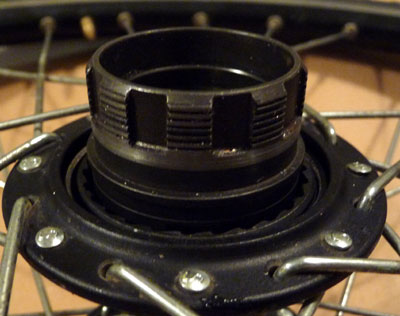
As you can see, if the splines on this baby were a bit longer you could probably put three gears on there without too much trouble. There may be single speed freehubs like this.
Machining the freehub
Strictly speaking, I probably didn't need to machine the freehub, but I wanted a larger surface for the modified cluster to sit against. If you look at the picture about there was a ridge in the freehub where the splines ended to support the gear. I machined this ridge flat with the main part of the freehub. This meant that the modified cassette could slide on over this part and get further support from there. In the picture below you can see where I have machined and removed the ridge.
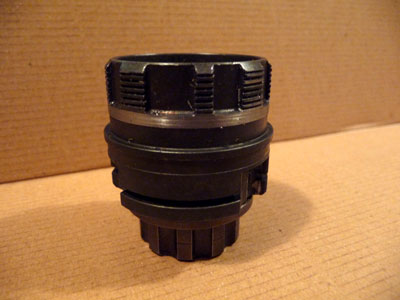
Machining the cassette
I started with an XT M760 11-32T cassette. The bit of interest is the 5 largest gears on the aluminium spider/carrier. The wheel side of the spider was machined off so it would fit further onto the freehub. The frame side of the spider was machined and internally relieved so the screw on lock ring would still engage with 4 threads on the freehub and also provide support for the cassette.
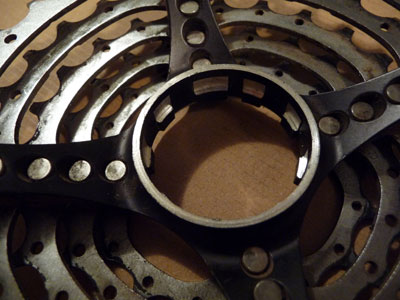
Here's a picture of the other side:
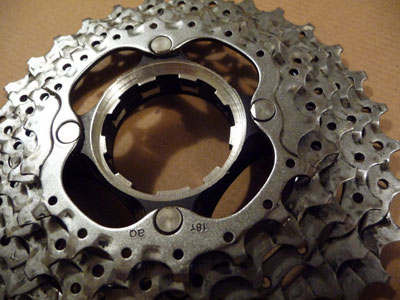
Here's what it looks like on the freehub:

Here it is with the lock-ring in place:
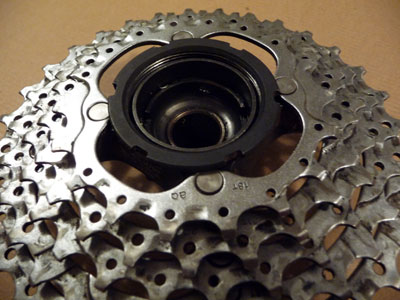
Here's a picture from the hub side with the cassette mounted to the freehub but removed from the wheel hub so you can see better:
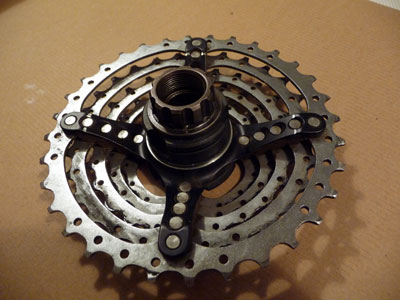
And finally, here's what the wheel looks like with the "5-speed" XT cluster on it:
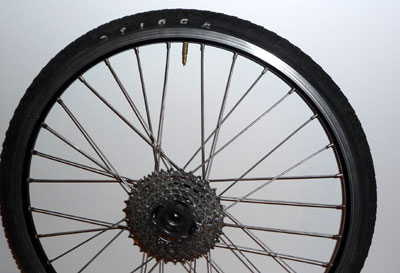
Adding the rest of the bits
DMR wheel tug with integrated derailleur hanger
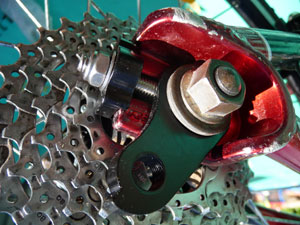
This little thing saved me having to make a derailleur hanger for the frame. I had to machine off a very small amount at the back to get it to fit in the drop-out slot perfectly - but it was only about 0.4mm of material so you could file it off in a jiffy.
Here's a bottom up shot of the cassette / wheel mounted in the frame. Clearance all round is good. It looks like it came like that from the factory!
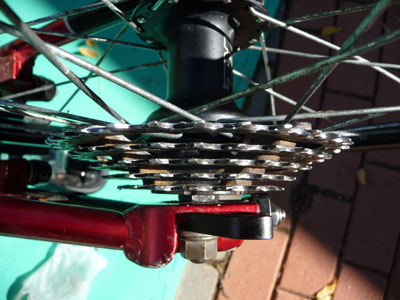
All the bits fitted up ready to ride:
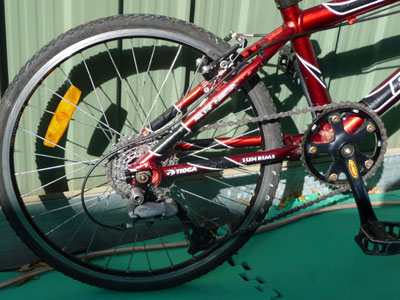
The complete bike:

Update - 25 September 2010
I've now fitted a triple ring front and some Manitou Sport forks that I shortened to suit a 20" wheel. All up weight is now a touch under 9kg.

Update - 2 October 2010
The triple ring front proved unnecessary so I put the FMF single ring cranks back on and ditched the shifter and cables. I've left the front derailleur on as a chain keeper.